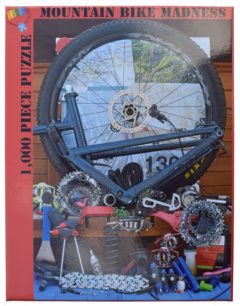Here we look at the ideas for Puzzle Storage and Maintenance: Best practices for storing and maintaining jigsaw puzzles, including framing and preservation.
Jigsaw puzzles can be a fun and rewarding pastime, but once they’re completed, the question arises of what to do with them. Whether you want to display them or store them for future enjoyment, it’s important to follow best practices for storing and maintaining jigsaw puzzles. In this post, we’ll explore some tips for puzzle storage and maintenance, including framing and preservation.
Storage
When it comes to storing completed puzzles, there are several options to consider. One of the easiest and most common ways to store puzzles is to keep them in their original boxes. However, this can take up a lot of space, especially if you have several completed puzzles.
An alternative is to transfer the puzzle to a storage container. There are many types of puzzle storage containers available, from plastic bags to specialized puzzle storage trays. Some even have separate compartments for sorting pieces. If you’re using a storage container, be sure to label it with the puzzle’s name, size, and number of pieces for easy identification later on.
Another option is to glue the puzzle together and frame it as a piece of art. This not only allows you to display the puzzle, but also preserves it for long-term storage.
Framing
Framing a completed puzzle is a great way to turn it into a piece of art. Before framing, it’s important to make sure the puzzle is completely dry and flat. There are several methods for gluing a puzzle together, including using puzzle glue, Mod Podge, or white school glue. Whatever method you choose, be sure to follow the instructions carefully and allow the glue to dry completely before framing.
When it comes to framing, there are several options to consider. You can have the puzzle professionally framed, which can be expensive but ensures high-quality framing. Alternatively, you can purchase a pre-made puzzle frame or make your own frame using materials from a craft store.
Preservation
To ensure the longevity of your completed puzzle, it’s important to take proper care of it. Avoid exposing the puzzle to direct sunlight or high humidity, as this can cause the colors to fade or the puzzle to warp. It’s also important to keep the puzzle clean, as dust and dirt can accumulate over time and affect the quality of the image.
To clean a puzzle, use a soft, dry cloth or a compressed air canister. Avoid using water or any cleaning solutions, as this can damage the puzzle.
Conclusion
Storing and maintaining completed puzzles can be a challenge, but with the right tools and techniques, it’s possible to preserve them for years to come. Whether you choose to store your puzzles in their original boxes, transfer them to a storage container, or frame them as a piece of art, following best practices for puzzle storage and maintenance is key to ensuring their longevity. With a little care and attention, your completed puzzles can continue to bring joy and entertainment for years to come.
